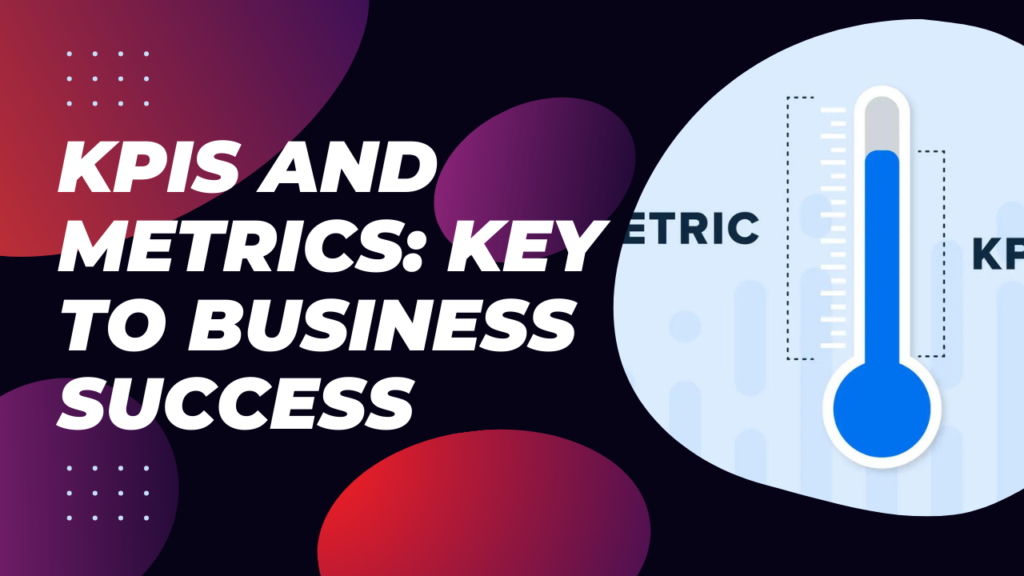Contents
Key Performance Indicators (KPIs) and Metrics: Identifying, Measuring, and Analyzing Critical Metrics for Business Performance and Strategic Decisions
Introduction
In today’s data-driven business environment, organizations of all sizes rely on Key Performance Indicators (KPIs) and metrics to track progress, measure success, and guide strategic decisions. KPIs and metrics provide a quantifiable means to evaluate the performance of various aspects of a business, from financial health and operational efficiency to customer satisfaction and employee productivity. This essay explores the importance of KPIs and metrics, the process of identifying and measuring them, and best practices for analyzing these critical metrics to drive business performance and strategic decision-making.

The Importance of KPIs and Metrics
KPIs and metrics serve as the backbone of performance management systems in modern organizations. They offer several significant benefits:
- Alignment with Strategic Goals: KPIs ensure that every part of the organization is aligned with its overall strategic objectives. By breaking down broad goals into specific, measurable targets, KPIs help employees understand their roles in the broader context.
- Objective Measurement: Metrics provide an objective basis for evaluating performance. This objectivity helps eliminate biases and subjectivity in performance assessments, leading to more accurate and fair evaluations.
- Improved Decision-Making: Data-driven insights gained from KPIs and metrics enhance decision-making processes. Leaders can make informed choices based on empirical evidence rather than intuition or guesswork.
- Performance Monitoring: Regular tracking of KPIs allows organizations to monitor performance in real-time. This ongoing vigilance enables early detection of issues, allowing for timely interventions and course corrections.
- Accountability and Transparency: Clearly defined KPIs and metrics foster a culture of accountability. Employees and teams are held responsible for their performance against these benchmarks, promoting transparency and continuous improvement.
Identifying KPIs and Metrics
Identifying the right KPIs and metrics is a critical step in ensuring they effectively measure performance and drive strategic decisions. The process involves several key considerations:
- Strategic Alignment: KPIs should directly relate to the organization’s strategic objectives. For example, if a company’s goal is to increase market share, relevant KPIs might include sales growth rate, customer acquisition cost, and market penetration rate.
- SMART Criteria: KPIs should adhere to the SMART criteria—Specific, Measurable, Achievable, Relevant, and Time-bound. This ensures that the KPIs are clear, quantifiable, realistic, aligned with business goals, and have a defined timeframe.
- Balanced Scorecard Approach: Utilizing a balanced scorecard approach ensures a holistic view of performance across different perspectives, such as financial, customer, internal processes, and learning and growth.
- Stakeholder Involvement: Engaging stakeholders in the KPI selection process helps ensure buy-in and relevance. Stakeholders can provide valuable insights into what metrics are most meaningful for their respective areas.
- Data Availability and Quality: The availability and quality of data are crucial. KPIs should be based on reliable data sources that can be consistently tracked and measured.
Types of KPIs
KPIs can be broadly categorized into several types based on the aspect of performance they measure:
- Financial KPIs: These metrics evaluate the financial health of an organization. Common financial KPIs include revenue growth, profit margins, return on investment (ROI), and cash flow.
- Operational KPIs: These metrics assess the efficiency of business operations. Examples include production efficiency, order fulfillment cycle time, and inventory turnover.
- Customer KPIs: These metrics gauge customer satisfaction and engagement. Examples include Net Promoter Score (NPS), customer retention rate, and customer lifetime value (CLV).
- Employee KPIs: These metrics measure employee performance and satisfaction. Examples include employee turnover rate, absenteeism rate, and employee engagement scores.
- Marketing KPIs: These metrics track the effectiveness of marketing efforts. Examples include customer acquisition cost, conversion rate, and return on marketing investment (ROMI).
- Project Management KPIs: These metrics evaluate the success of project management activities. Examples include project completion time, budget variance, and resource utilization.
Measuring KPIs and Metrics
Once KPIs are identified, the next step is to measure them accurately and consistently. This involves several key steps:
- Data Collection: Collecting accurate and relevant data is the foundation of KPI measurement. Organizations can use various methods, including automated systems, surveys, and manual tracking, to gather the necessary data.
- Data Integration: Combining data from multiple sources ensures a comprehensive view of performance. Integrated data systems, such as enterprise resource planning (ERP) and customer relationship management (CRM) systems, facilitate seamless data integration.
- Data Analysis Tools: Utilizing advanced data analysis tools and software, such as Tableau, Power BI, and Excel, helps in processing and visualizing data effectively. These tools enable the creation of interactive dashboards and reports for real-time monitoring.
- Regular Reporting: Establishing a regular reporting schedule ensures that KPIs are monitored consistently. Monthly, quarterly, or annual reports provide insights into trends and allow for timely adjustments.
- Benchmarking: Comparing performance against industry standards or competitors’ performance provides context for KPI results. Benchmarking helps identify areas of improvement and set realistic targets.
Analyzing KPIs and Metrics
Analyzing KPIs involves interpreting the data to derive meaningful insights and inform strategic decisions. Effective analysis includes several key components:
- Trend Analysis: Examining trends over time helps identify patterns and predict future performance. Trend analysis can highlight areas of consistent improvement or decline.
- Root Cause Analysis: Understanding the underlying causes of performance variations is essential. Root cause analysis techniques, such as the 5 Whys and Fishbone Diagram, help identify the factors contributing to performance issues.
- Comparative Analysis: Comparing KPIs across different periods, departments, or geographies provides a broader perspective on performance. Comparative analysis helps identify best practices and areas needing attention.
- Performance Dashboards: Interactive dashboards provide a visual representation of KPIs, making it easier to spot trends and anomalies. Dashboards can be customized to display relevant metrics for different stakeholders.
- Scenario Analysis: Evaluating different scenarios and their potential impact on KPIs helps in strategic planning. Scenario analysis enables organizations to prepare for various outcomes and develop contingency plans.
Best Practices for Using KPIs and Metrics
To maximize the effectiveness of KPIs and metrics, organizations should follow several best practices:
- Clear Communication: Clearly communicate the purpose and importance of KPIs to all employees. Ensure that everyone understands how their roles contribute to achieving the KPIs.
- Continuous Improvement: Treat KPIs as dynamic tools that evolve with the organization’s goals and environment. Regularly review and update KPIs to ensure they remain relevant and effective.
- Employee Involvement: Involve employees in the KPI development process to foster ownership and engagement. Employees are more likely to be committed to achieving KPIs they helped create.
- Training and Support: Provide training and resources to help employees understand and use KPIs effectively. This includes training on data analysis tools and techniques.
- Reward and Recognition: Recognize and reward employees and teams that achieve or exceed KPI targets. Positive reinforcement encourages continued performance and motivates others.
- Balanced Approach: Ensure a balanced approach to KPI measurement, avoiding overemphasis on any single area. A balanced scorecard approach helps maintain focus on all critical aspects of performance.
- Transparency and Accountability: Promote transparency in KPI reporting and hold individuals accountable for their performance. Transparency builds trust and encourages honest assessment and improvement.
Challenges in Using KPIs and Metrics
Despite their benefits, using KPIs and metrics comes with challenges:
- Data Quality Issues:
Data quality issues can significantly undermine the effectiveness of KPIs by leading to inaccurate measurements and flawed analysis. Inconsistent or incomplete data can skew results, causing misinformed decisions and potentially harming business strategies. Ensuring data accuracy involves rigorous validation processes, regular audits, and the use of reliable data sources. Additionally, fostering a culture of data integrity and training employees on best data management practices are crucial steps to maintain high-quality data for precise KPI tracking and analysis.
- Overemphasis on Metrics: Focusing too much on metrics can lead to a narrow view of performance, ignoring qualitative factors. A balanced approach is necessary.
- Resistance to Change: Employees may resist new KPI systems, especially if they feel overwhelmed or unfairly evaluated. Change management strategies can help mitigate resistance.
- Setting Unrealistic Targets: Unrealistic KPI targets can demotivate employees and lead to gaming the system. Setting achievable and meaningful targets is essential.
- Lack of Integration: Disconnected data systems can hinder comprehensive KPI measurement. Integrated data solutions are necessary for effective KPI tracking.
Conclusion
KPIs and metrics are indispensable tools for modern organizations, providing a structured and objective means to measure performance and guide strategic decisions. By carefully identifying, measuring, and analyzing KPIs, businesses can align their activities with strategic goals, improve decision-making, and foster a culture of accountability and continuous improvement. However, successful implementation requires attention to data quality, stakeholder involvement, and a balanced approach to performance measurement. By adhering to best practices and addressing potential challenges, organizations can harness the full potential of KPIs and metrics to drive business success and achieve their strategic objectives.
